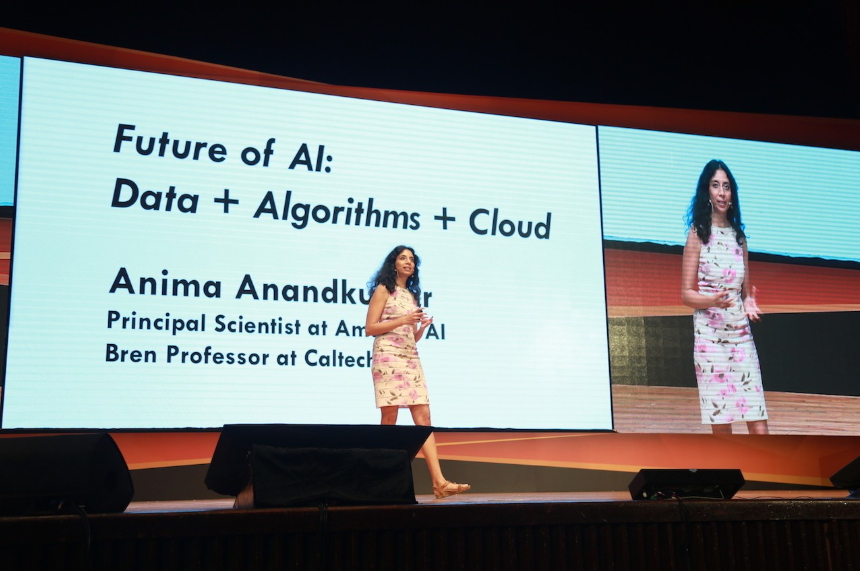Why a Dog is Smarter than a Robot and other AI Insights from an Amazon Web Services Scientist

Not everyone gets artificial intelligence, also known as AI. Some people are afraid of it. But AI can already extract topics from documents, just to name one example, and every big name in high tech is trying to develop it.
Animashree Anandkumar, principal scientist at the Amazon.com subsidiary Amazon Web Services and a California Institute of Technology professor, spoke at the 2018 Digital Innovation Forum in Taipei July 20. Business Next did a Q&A with Anandkumar at the event about what AI means, what’s next for the technology and what she is doing with it.
Q: How should people think about artificial intelligence?
When we talk about artificial intelligence, we need to think, first of all, what is intelligence? I think there is a lot of confusion about what is artificial intelligence and what is not artificial intelligence.
(I gave) an example of a Boston Dynamics Atlas robot, which is a very sophisticated robot that can do backflips. Then I contrasted it with a dog that actually fumbled a ball. The message is the dog is intelligent but the Atlas robot is not, because the robot is being programmed. The point is: The ability to acquire knowledge and build on skills, and learn more from the surrounding world, is intelligence.
Once we have that clarification of what intelligence is, we can then ask ourselves what does artificial intelligence involve? I talked about how the trinity— data, algorithms, infrastructure — is fuelling artificial intelligence.
Usually when people think of AI, they only think of the algorithm. But without data, without the internet, we wouldn’t have had our deep learning systems. Without GPUs, we would not have had deep learning. All these three have to come together.
Q: Where do we go next? What is the future?
At Caltech, we have recently launched a program called CAST, the new Caltech Center for Autonomous Systems and Technologies. It’s a new initiative from Caltech launched in October last year.
The Centre for Autonomous Systems and Technology is looking at the future of artificial intelligence—the idea of bringing mind and body together.
Machine bodies like robots we have right now is mostly the body without the mind. The question is how do we bring artificial intelligence and robotics together? I think that’s going to be the future.
Q: What are some of the projects you’ve been working on?
At Amazon Web Services, I’m involved with several projects, including Amazon Rekognition and Amazon SageMaker. I’ve built many core algorithms including work for topic modelling.
What this algorithm does is you can use a bunch of documents and extract the topics automatically. This work was based on my research, which I have published before. It was good to see that one of the research projects done five years ago can now be turned into a reality.
My company Amazon Web Services has a partnership with Caltech and has funded over US$200 million to Caltech faculty and students.
I’m proud to say that Amazon Web Services has funded over 40 proposals across the Caltech campus. There’s just so many fascinating usages and applications of machine learning. I look forward to seeing more of interesting research coming out from the community.
Q: Microsoft set up an artificial intelligence (AI) research and development center in Taiwan in January. In March, Google announced it will hire 300 people in Taiwan and train 5,000 Taiwanese students in artificial intelligence programming. I’m curious, what is Amazon doing in Taiwan?
Well, we don’t comment on our competitors, and I personally cannot comment on Amazon’s engagement with Taiwan. I know that there has been an innovation center being set up early this year in Taipei. Amazon is a big company. But I would say that Amazon is interested in enabling AI across the globe.
I would like to see more grassroots-driven open source projects emerging from the AI community.
I think we need to make it very easy for anyone—high school students, college students, engineers and scientists—to get started with machine learning. And of course, if Taiwanese governments are making growing the AI talent pool a priority, I think it’s a move in the right direction.
〔Original :Meet Startup @ TW〕https://meet.bnext.com.tw/intl/articles/view/43395